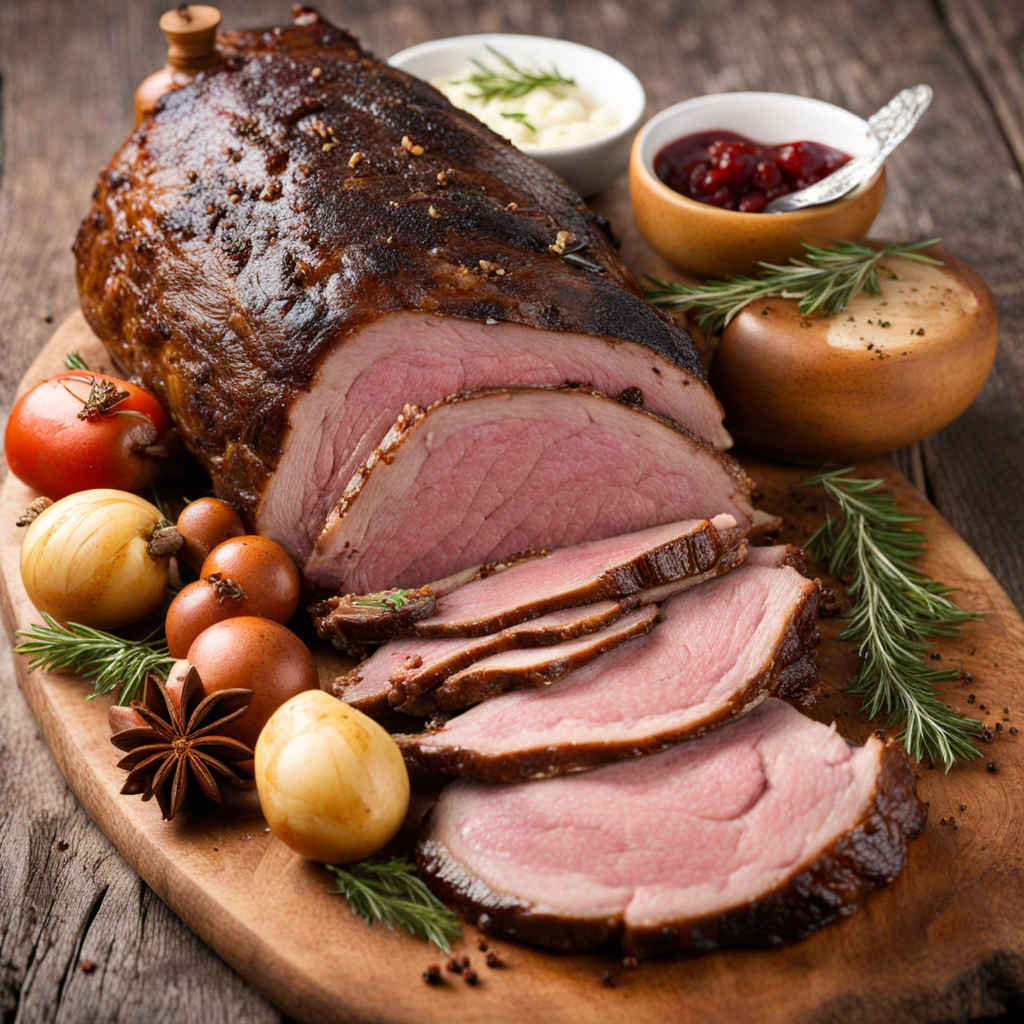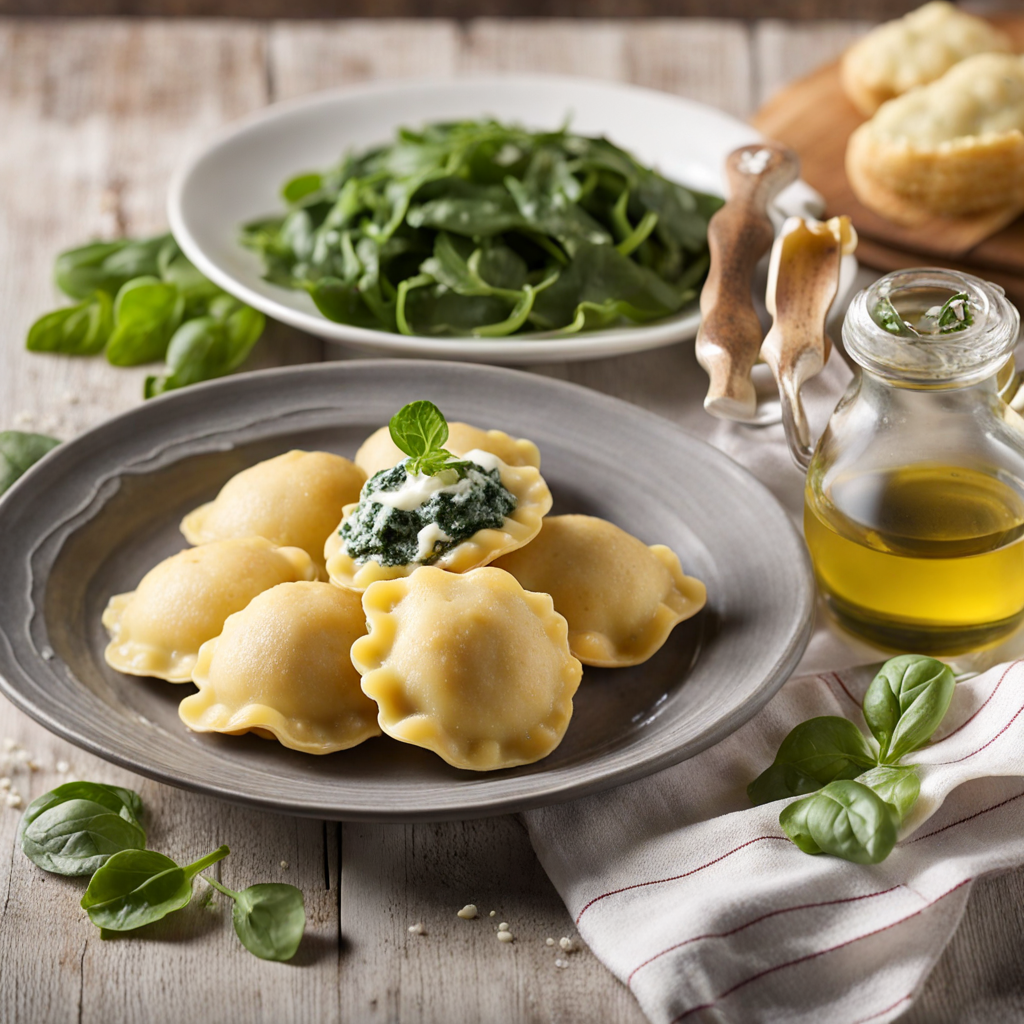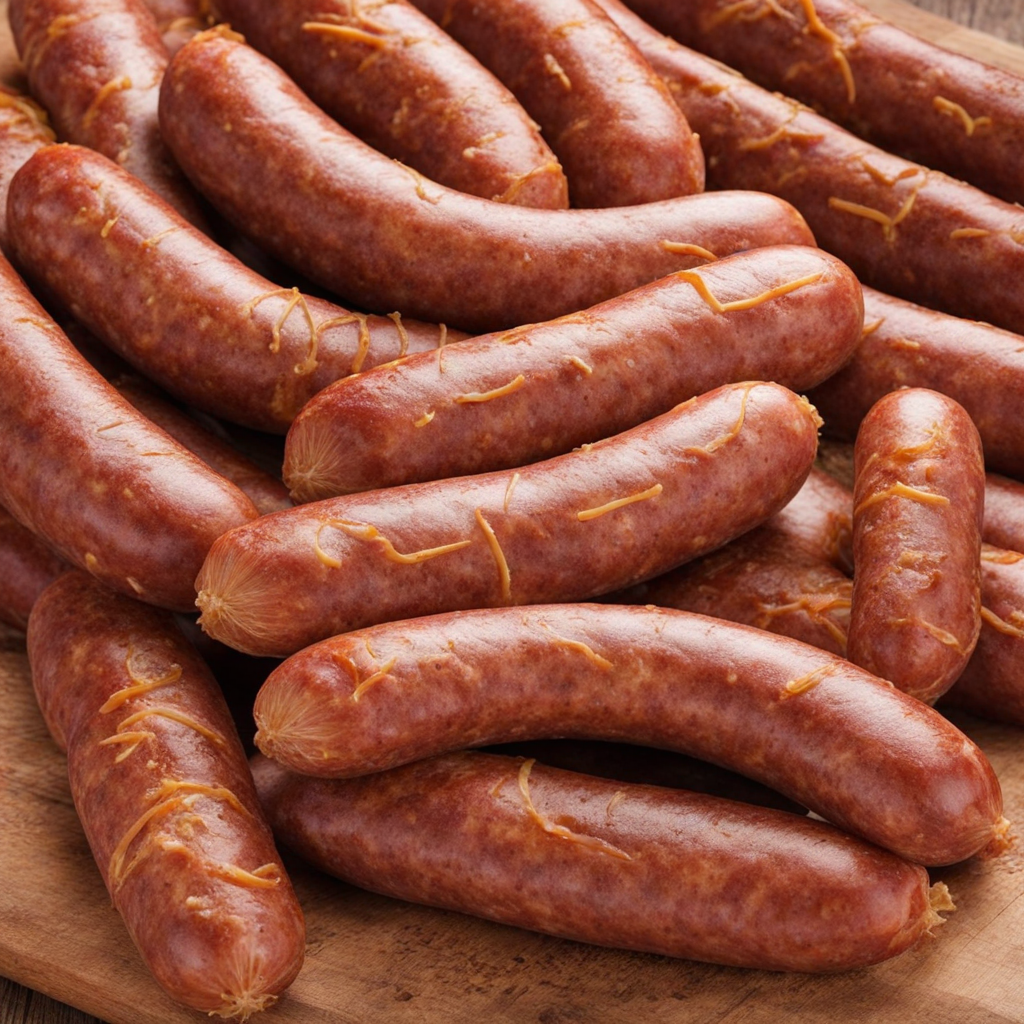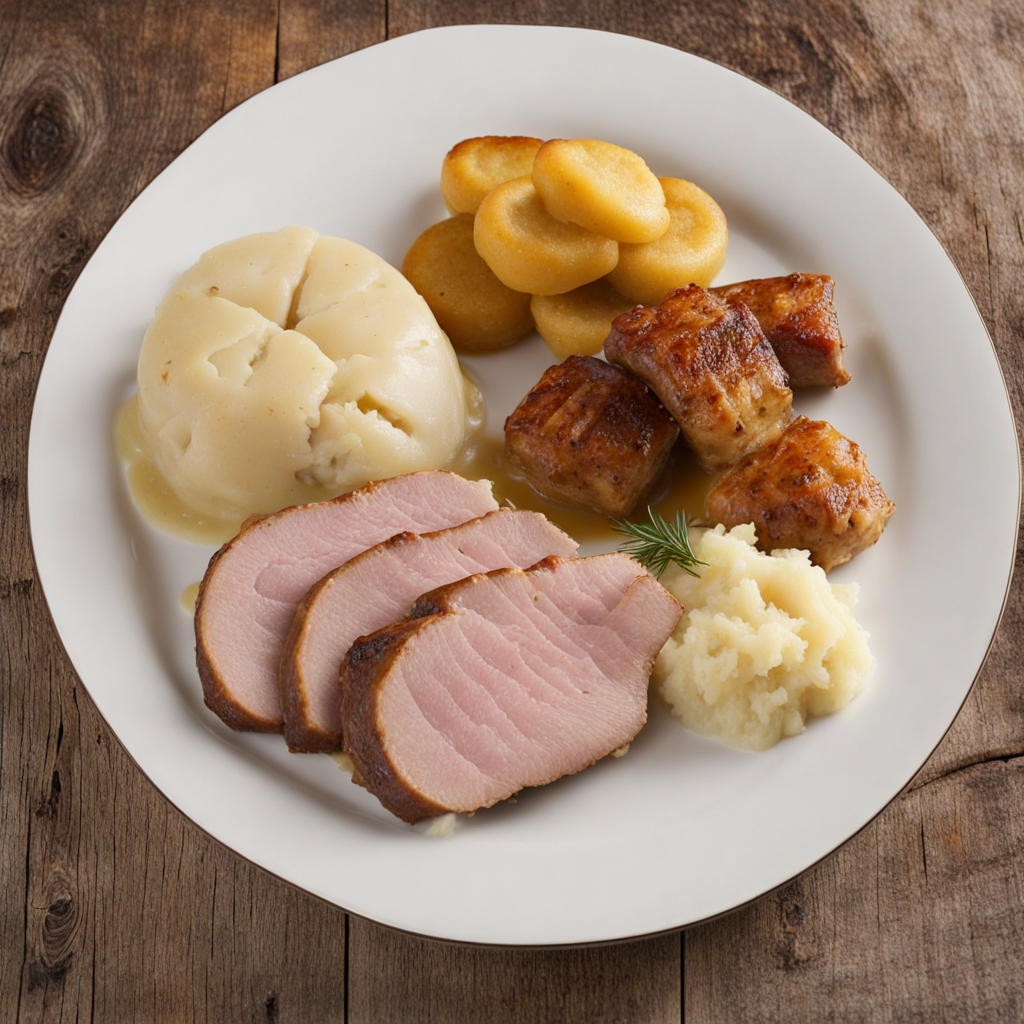Wildschweinbraten
Wildschweinbraten, or wild boar roast, is a traditional Austrian dish that encapsulates the rich flavors of the Alpine region. The meat is sourced from wild boar, which is known for its robust and slightly gamey taste, making it a unique alternative to more commonly consumed meats like pork or beef. The preparation often involves marinating the meat in a blend of red wine, juniper berries, garlic, and various herbs, allowing the flavors to penetrate the meat deeply, resulting in a tender and savory roast that is bursting with complexity. Once marinated, the wild boar is typically slow-roasted, which enhances its natural flavors and results in a beautifully caramelized exterior. The cooking process renders the meat juicy and succulent while the spices and marinade create a fragrant aroma that fills the kitchen. Served with traditional sides such as red cabbage, potato dumplings, or creamy polenta, Wildschweinbraten is a hearty dish that warms the soul and satisfies the appetite, making it perfect for gatherings and festive occasions. Accompanying the roast, a rich gravy made from the drippings adds another layer of depth to the dish, enhancing each bite with earthy undertones. This dish not only showcases the culinary traditions of Austria but also reflects the region's connection to nature and its bounty. For those looking to explore new culinary experiences, Wildschweinbraten offers a taste of the wild, combining rustic flavors with a touch of elegance that will undoubtedly leave a lasting impression.
How It Became This Dish
A Culinary Journey through Wildschweinbraten: The Austrian Roast Boar Wildschweinbraten, or roast wild boar, is a dish steeped in rich tradition and cultural significance in Austria. This savory preparation is not merely a meal; it embodies the history, landscape, and culinary evolution of the Alpine region. To understand Wildschweinbraten, one must explore its origins, cultural significance, and the various transformations it has undergone through time. #### Origins of Wildschweinbraten The wild boar (Sus scrofa) has roamed the forests of Europe for millennia, and its presence in Austrian culinary history is as ancient as the land itself. Evidence of wild boar hunting dates back to prehistoric times, with cave paintings from the Stone Age depicting hunters in pursuit of these formidable creatures. The boar’s meat was not only a staple for early humans but also a symbol of strength and survival. As time progressed, the hunting of wild boar became integrated into the social fabric of Austrian life. By the Middle Ages, the nobility had developed a taste for wild game, and boar hunting became a popular sport among the aristocracy. This period saw the beginning of organized hunting events, where the thrill of the chase was often accompanied by grand feasts celebrating the successful hunt. The nobility would showcase their culinary prowess by preparing dishes like Wildschweinbraten, which often featured complex marinades and slow-roasting techniques to enhance the meat’s rich flavors. #### Cultural Significance Wildschweinbraten holds a significant place in Austrian culture, particularly during the colder months when hearty dishes are favored. The dish is emblematic of the communal aspect of dining in Austria, as it is often served during festive occasions, family gatherings, and traditional celebrations such as Christmas and New Year’s. The preparation of Wildschweinbraten is a labor of love that brings families together, as they share in the marinating, roasting, and carving of the boar, often accompanied by local wines and seasonal side dishes. The cultural significance of Wildschweinbraten extends beyond family gatherings. It is a dish that reflects the deep connection Austrians have with their natural environment. The forests that blanket the country are not only home to wild boar but also serve as a source of inspiration for Austrian folklore and traditions. The wild boar has become a symbol of strength and resilience, often appearing in local tales and legends that celebrate the spirit of the hunt and the bounty of the land. Moreover, the dish is an embodiment of the farm-to-table movement that is increasingly prevalent in Austria. Chefs and home cooks alike emphasize the importance of sourcing locally and sustainably, often procuring wild boar from nearby forests. This practice not only supports local ecosystems but also fosters a sense of pride in regional culinary traditions. #### Development Over Time The preparation of Wildschweinbraten has evolved significantly over the centuries, influenced by regional ingredients, culinary techniques, and social changes. In the early days, the method of preparing boar was rudimentary, focusing primarily on preservation through smoking or salting. As culinary techniques advanced, so too did the methods for cooking wild boar. By the 18th and 19th centuries, the art of roasting had taken center stage. Cooks began to experiment with various marinades, often incorporating local herbs, spices, and wines to enhance the natural flavors of the meat. Traditional recipes typically include a marinade of red wine, juniper berries, garlic, and various herbs, which not only tenderize the meat but also infuse it with complex flavors. The boar is often slow-roasted in an oven or over an open fire, allowing the fat to render and create a crisp, caramelized exterior while keeping the interior juicy and tender. In the 20th century, as Austria underwent significant social and political changes, so too did its culinary landscape. The post-war period saw a renewed interest in traditional foods, and Wildschweinbraten experienced a renaissance. Chefs began to honor age-old recipes while incorporating modern techniques and presentations, making the dish appealing to a new generation of diners. Today, Wildschweinbraten is celebrated in both rustic taverns and upscale restaurants across Austria. Chefs take pride in showcasing local ingredients, with many opting to serve the dish alongside seasonal vegetables, homemade dumplings, or creamy polenta. The pairing of Wildschweinbraten with regional wines, particularly robust red wines like Blaufränkisch or St. Laurent, elevates the dining experience, creating a harmonious balance of flavors. #### Contemporary Perspectives In recent years, there has been a growing interest in sustainable and ethical hunting practices, which has further reshaped the way Wildschweinbraten is perceived and prepared. As awareness of environmental issues increases, many Austrians seek to ensure that the wild boar they consume is sourced responsibly. This trend aligns with the broader movement toward sustainable gastronomy, where chefs and hunters work together to promote conservation and respect for wildlife. Furthermore, the rise of culinary tourism has brought renewed attention to traditional dishes like Wildschweinbraten. Visitors to Austria are increasingly eager to experience authentic local cuisine, leading to a flourishing of food festivals and events centered around wild game. This not only helps preserve culinary traditions but also supports local economies and fosters an appreciation for Austria’s rich gastronomic heritage. Conclusion Wildschweinbraten is more than just a dish; it is a celebration of Austria’s history, culture, and natural bounty. From its ancient origins as a hunted game to its modern-day status as a beloved culinary staple, roast wild boar encapsulates the spirit of the Austrian people. It is a dish that brings families together, honors tradition, and showcases the beauty of the landscape. As we savor Wildschweinbraten, we are reminded of the deep connections between food, culture, and the environment—connections that continue to evolve while remaining rooted in the past.
You may like
Discover local flavors from Austria







